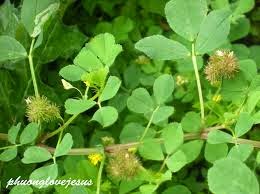Snow may still be on the ground, but LOVE is in the
air. Cardinals are so ubiquitous at our
feeders that it is a great bird to practice your bird behavior watching skills
on.
Over the winter, perhaps you had several pairs coming to
your supply of seed, and if you were watching, you might have noticed the male
is slightly aggressive to the female.
Nothing of a domestic violence order of course, simply that the female
usually gives way to the male. You may
have been lucky enough in winter to see several pairs at the feeder at
once. For many territorial birds that
need to defend their territory is only present in the breeding season whereas
winter time is a time to gather in flocks.
As early as mid Feb you might have noticed a
difference. They were beginning to
travel in pairs, and, as love can often “break up that old gang of mine”, so
does the increase of hormones begin to change this gregarious flock into one
prone to border skirmishes. For some
time now, in Texas, I have been watching chase scenes of male cardinals after
males, and females after females.
And isn’t that interesting, as the pairs mate for life,
mostly anyways, they seem to have divvied up the “defending hearth and home”
responsibilities with each of them chasing off members of their own sex. “You go get him Harry!” “She’s all yours Harriet”. Watch for it, two red males careening through
the trees and in other cases, two females chasing and “chipping” wildly.
 It is that loud and
excited chip that should get your attention.
When you hear it something is up.
It may be defense of territory, but it also may mean danger. Look for
cats, or the smaller hawks like Coopers and Sharp Shinned that prey on smaller
birds. Soft continuous chips are the
pair keeping track of each other. They
do this pretty continually and in the book, “What the Robin Knows” by Jon
Young, he tells a heroic story of a cardinal that noticed his mate had stopped
chipping, only to see she was frozen in fear and in the path of a hunting
hawk. He said the male swooped right
into the path of the hawk, surprising it to where neither did the hawk get the
female but the male got away also. Shew;
an impressive display of mate loyalty!
It is that loud and
excited chip that should get your attention.
When you hear it something is up.
It may be defense of territory, but it also may mean danger. Look for
cats, or the smaller hawks like Coopers and Sharp Shinned that prey on smaller
birds. Soft continuous chips are the
pair keeping track of each other. They
do this pretty continually and in the book, “What the Robin Knows” by Jon
Young, he tells a heroic story of a cardinal that noticed his mate had stopped
chipping, only to see she was frozen in fear and in the path of a hunting
hawk. He said the male swooped right
into the path of the hawk, surprising it to where neither did the hawk get the
female but the male got away also. Shew;
an impressive display of mate loyalty!
Just a couple more things you might see in this season of
love:
-Male cardinals feeding the female. Totally a tender moment as he picks out a
choice seed and offers it to his mate.
And bless him, he doesn’t drop this behavior once the honeymoon is over,
but will often feed her in a similar manner as she is incubating the eggs.
-Aggressive hormones are elevated now, and as much as the
male will chase off a territorial intruder, both males and females will fight
relentlessly at that pertinent cardinal looking back at them from your window,
or your car mirrors. No matter how much
they batter the glass, this guy isn’t going away! Do them a favor and cover your rear view
mirrors with plastic bags, or put paper up in the offending window. When the hormones drain away, so will the
window battering. Although, can you
believe it, there is a record of a female battering a window every day for 6 months!! Think she was on hormone supplements?
-“The redder the better”.
Studies have shown the redder males, get the girls, or girl in this
case. Remember, they are
monogamous. And the redder males get the
better territory, which often comes before getting the girls, and therefore the
redder males have more offspring.
-Listen for “counter singing”. As a pair is establishing a territory they
may be at opposite ends of it and singing back and forth, one copying the
phrase of the other note for note. Songbirds,
by the way, learn their songs so sometimes you hear regional differences. I haven’t noted a Texas accent to their
“cheer, cheer” but maybe I haven’t listened hard enough!
All right, clearly there is too much information to share on
this familiar bird, and no doubt, you have other things to do today. God bless the Internet and the Cornell site
in particular. Should you be interested
in more information you can always Google it yourself. Or perhaps I have already given you more
information than you wanted!
Either way, now that you know what to look for, you will be amazed
at the various dramas being played out in your own backyard. Happy Spring everyone, the world is full of
wonders to watch for!


























